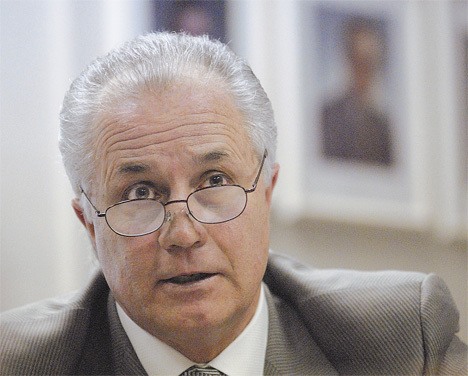When the time comes for someone to write the story of the Auburn School District’s 2009-2010 year, Superintendent Kip Herren suggests the following line: we worked it out together.
Staring down a projected $6 million budget shortfall and similar shortfalls over the next three-to-four years brought about by $1.3 billion in state cuts in funding for education, the district on April 27 made the deepest reductions since the double-levy failure 30 years ago.
Without the cuts, the district could have lost athletic programs at the secondary level. It could have had 40 students in a classroom. It could have lost 70 teachers. It could even has lost its ability to provide transportation services to get kids to school.
“We would have lost all our learning specialists, we would have lost 30 minutes a day of learning for first- and second-graders to learn how to read had we not gone through the organization and reduced,” Herren said. “When the state takes its allocation away, what can you rely on? You can only rely on local levy dollars. So what did we do to keep these people with jobs serving kids? We reduced $6 million, 25 percent out of our local levy dollars.”
Herren found people were then willing to work on behalf of the best interests of students in the 2009-2010 school year and beyond.
“We had five groups that we bargained with, and all the bargaining groups were very mindful of the economic crisis and recognized that we needed to work together in the best interest of students,” Herren said.”And in this case that means having a teacher with a class size that makes for more effective teaching and keeping as many programs that kids connect with as possible operating. We really feel like the reductions that we did matched up well with the program priorities.”
The willingness to do what it took started from the top.
“All of the 75 administrators in the district took a 1.5 percent reduction in their pay, but it created furlough days, equivalent to get to the 1.5 percent. They can schedule those furlough days,” Herren said. “That happened with administrators, but it was not the case with any of the other employees. Administrators agreed to the cut even though with contract negotiations approaching they could have asked for a raise. It isn’t just that they took a decrease, they rolled their contracts over.”
The district also arranged for Mt. Baker and Rainier Middle schools to start 15 minutes earlier. This allows the district to double shift transportation, eliminating 14 routes without reducing service to the community.
This year the district hired only 14 new teachers, the smallest group since the early 1980s.
“That’s a process with retirees and absences,” said Herren. “And we’re taking a conservative enrollment number because there’s a new high school opening up in the Auburn School District, the Muckleshoot Tribal School. So we’ve had to take a very conservative staffing ratio.”
Custodial services even took a cut. Today all of the people who work in the district’s administration building empty their own trash, do their own dusting, empty their own recycling, pick up their own offices.
It could have been far worse. And unhappily, the district’s financial problems are not a one-year-and-its-over thing.
In 2012, all the federal stimulus money that the district plugged into various locations — with strings attached — goes away, as the federal government has made clear.
“We’re using $2 million of an ending fund balance, and we’re planning to use it every year for the next three years. The ending fund balance is one-time savings, and we’re using it so that we can maintain staffing. We have now hired back 70 teachers since that April 27 resolution because of the other cuts that we made. Some of the other cuts are one year only, but others are more significant.
“So we continue to make reductions to create some stability in the future, and that stability would be class size and having teachers staffed at the current level,” Herren said. “It does create pressures in other areas, but in terms of the future, we’ve planned for having teachers in the classroom providing what they do well.”
Classes throughout the Auburn School District start Wednesday with a projected enrollment of 14,665.



